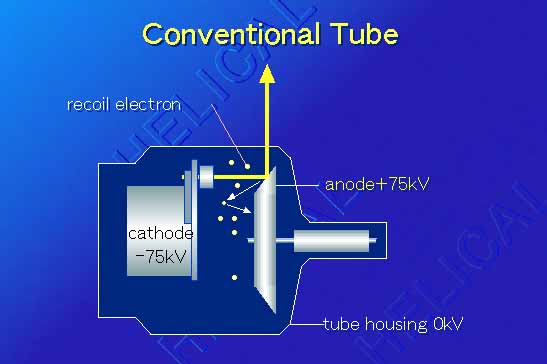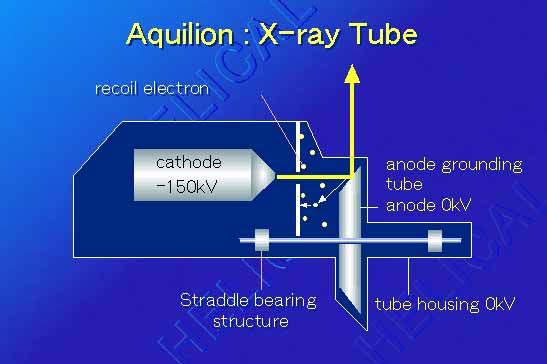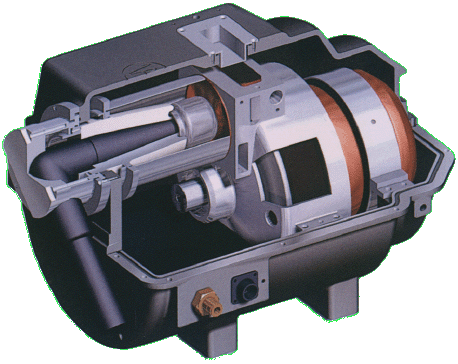



Unlike to most of other technological factors, X-ray tube on multislice CT scanner is exceptionally benefited since the lord to the tube is reduced by the employment of multislice detector. In this aspect, the tube for multislice CT is not necessarily to be a bigger one. However, the situation may totally be changed when one goes to employ faster rotation in combination with multislice detector system. Aquilion was the first scanner to be equipped with half-second rotation. Because of this challenging specs, an entirely new tube design is required in terms of precision, safety, and product life.
During 0.5-s scanning, the anode of the X-ray tube is subjected to a force of 13-G, so that the conventional cantilever anode could not tolerate G force.

The shorter scanning time also requires an increased X-ray dose per unit time, so a high-output X-ray generation system is needed. Furthermore, faster scanning is expected to lead to an increase in the number of examinations, which means that the X-ray tube must have improved cooling efficiency. To satisfy these requirements, a completely new X-ray tube has been developed for Aquilion. This tube has a straddle bearing structure in which the anode is supported by bearings on both sides which provides a more precise and stable focus and a longer service life compared with the conventional cantilever anode type.

In addition, the new tube is anode grounded, so the voltage is applied only to the cathode. This design eliminates the risk of electrical discharge between the anode and the housing, allowing them to be moved closer together, which resulted improved cooling. In an anode-grounded tube, recoil electrons from the anode are prevented from re-entering the anode, minimizing heat buildup. As a result of the above design innovations, the new tube is able to offer a cooling efficiency comparable to that of a conventional tube rated at 20 MHU. Elimination of recoil electrons is also effective in eliminating off-focus radiation, which will improve accuracy of X-ray beam geometry.

Since this is truly an innovative product, it is not strange that we had had numbers of difficulty to overcome at early stages of development. We have experienced several problems in stability and tube life. These problems were seen in the process to establish production lines, which was fixed after enthusiastic research. Our current tube is perfectly stable and no practical problem can be found. The performance is really amazing. We have never experienced waiting time for tube cooling in actual clinical practice.

